A practical, settings-savvy guide that blends Valve’s “Deck Top Played” mainstays with hand‑picked gems—each with quick tweaks to maximize battery, frames, and fun.
How we picked: Valve publishes a live Top Played on Steam Deck chart; we drew several staples from there and paired them with curated picks that shine portably. We also cross‑checked 2024’s year‑end “most‑played on Deck” highlights to anchor trends before adding fresh 2025 standouts.
20) Balatro (2024)
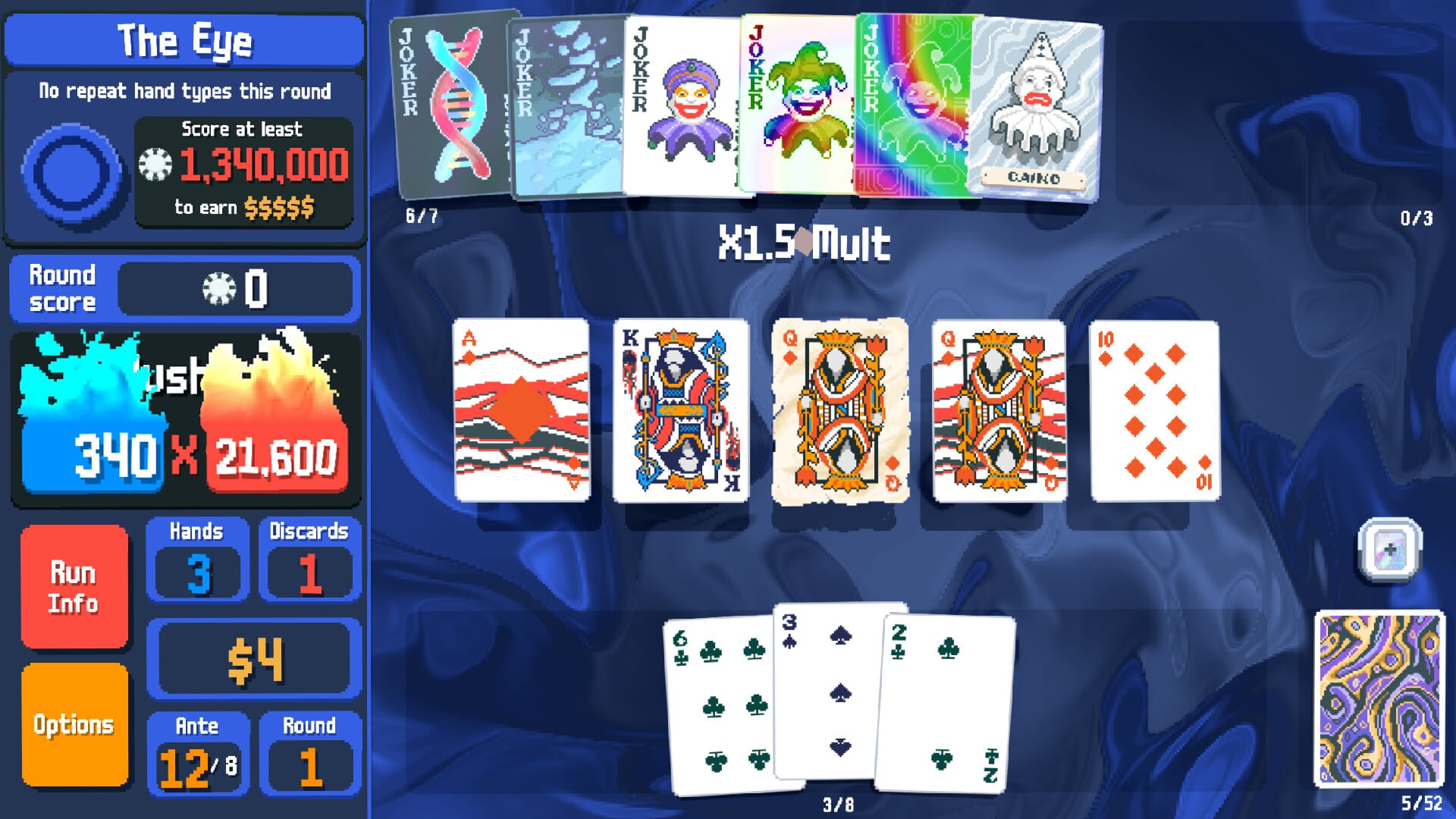
A breakout roguelike deckbuilder that also happens to be a Steam Deck superstar, Balatro thrives on short, high‑tension runs and snappy menus. Its clean visuals scale beautifully to 1280×800, so the best “portability tweak” is simply to raise the Deck OLED refresh rate to 90 Hz for ultra‑responsive inputs and silky card animations; lock V‑Sync for tear‑free play and set a low TDP cap (Balatro sips power). If you want maximum battery, cap the frame rate to 60 fps instead. Sound and haptics are punchy on headphones, and quick‑resume perfectly suits its just‑one‑more‑run loop. Balatro has been a regular face on Valve’s Top Played charts, thanks to its runaway word‑of‑mouth. Strategy fans: try “small‑stakes” runs when you’re dockless, then push for big‑score builds when plugged in. Minimal UI scaling needed; everything reads clearly on the 7‑inch display, and touch controls are optional yet comfortable for mulligans.
19) Stardew Valley (2016)
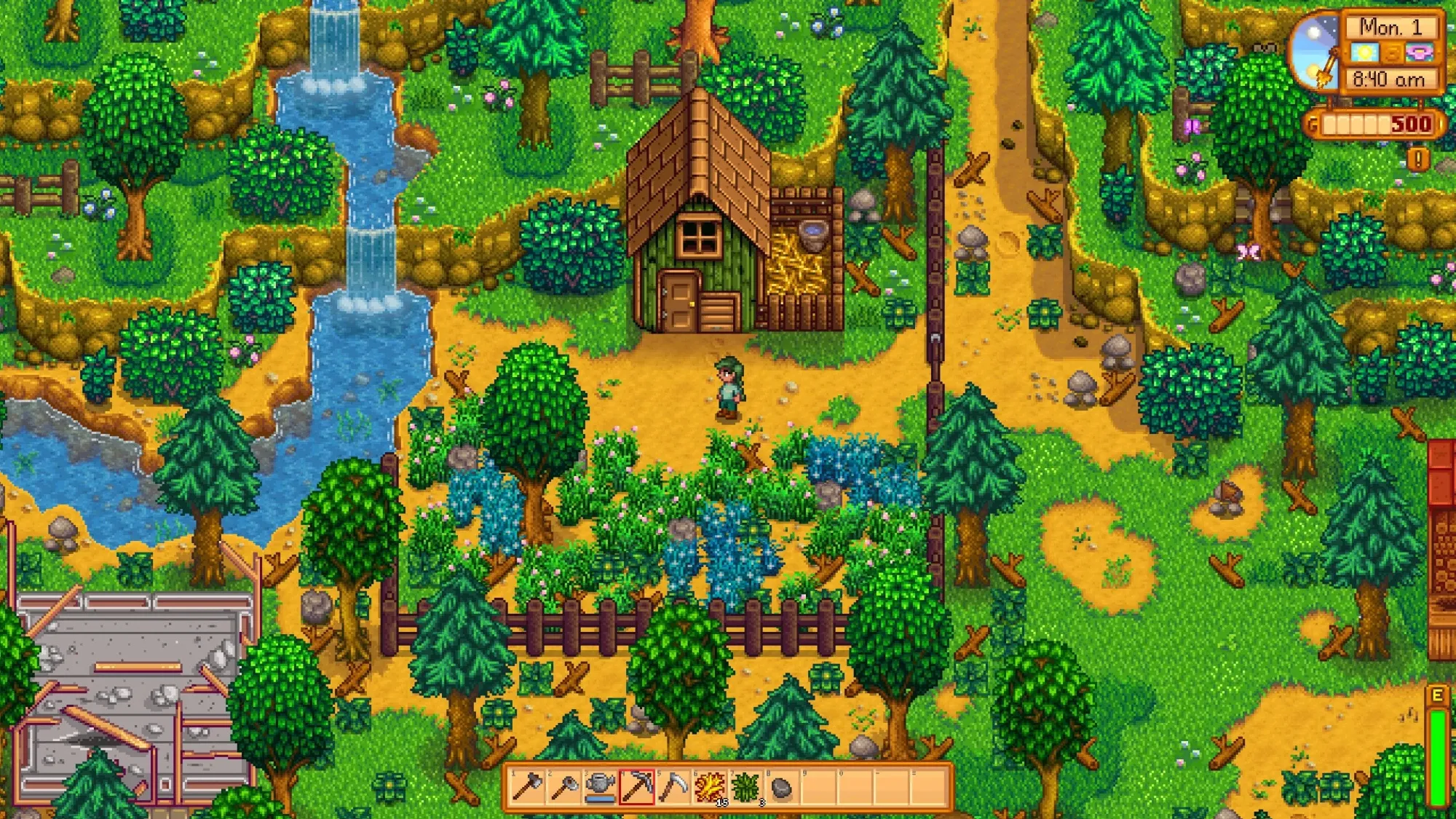
Few games marry coziness and depth like Stardew Valley, and on Steam Deck it’s practically the definition of “runs great.” The 2D pixel art is crisp at native 800p, so push the refresh rate to 90 Hz if you’ve got an OLED Deck for smoother scrolling and fishing mini‑games; otherwise 60 Hz is plenty and saves battery. Use the game’s Zoom slider (around 75–85%) to balance readability with a roomy view of your farm. Because it’s lightweight, a 6–8 W TDP cap still nets smooth performance and a very long play session. The Deck’s gyro aims don’t matter here, but the back touchpads are perfect for quick tool swapping if you map them. Stardew also appears frequently in Valve’s Top Played round‑ups; its daily‑ritual rhythm makes it ideal for commutes and bedtime crops, and local co‑op is a treat when you dock. Save often; quick sleeps between days make it a perfect pick‑up‑and‑put‑down sim.
18) Baldur’s Gate 3 (2023)
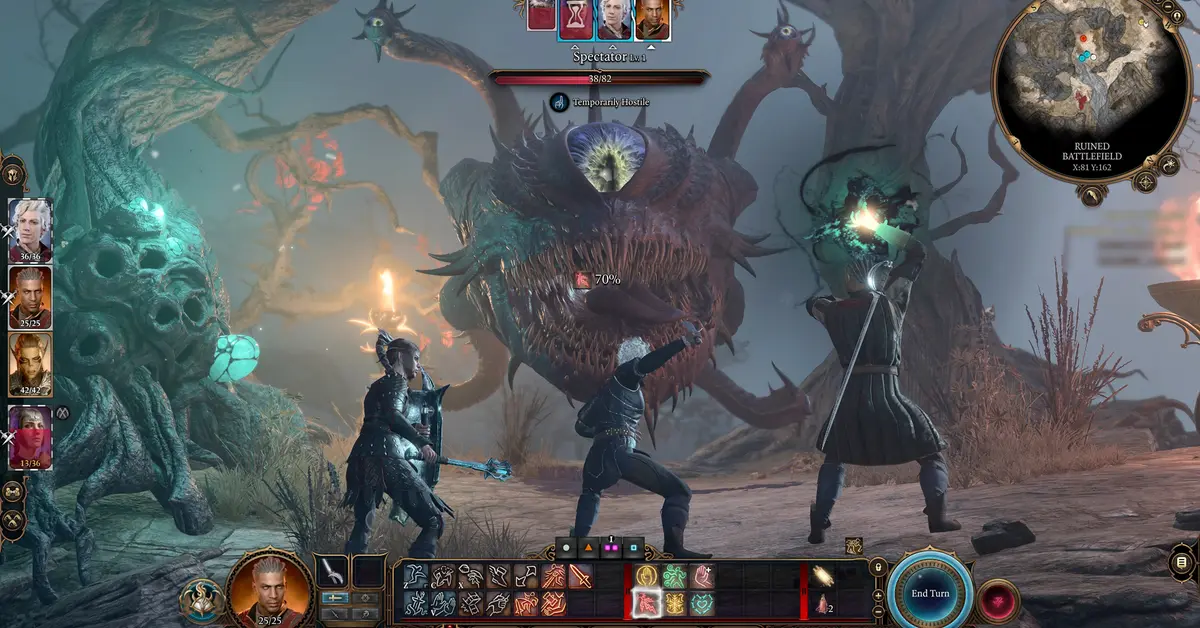
CRPGs aren’t supposed to run this well on a handheld, yet BG3 is a Deck staple. For a great balance of fidelity and battery, stick to 800p with the Medium preset, disable ambient occlusion/motion blur, enable FSR 2 (Quality), and set the system refresh to 40 Hz with a 40 fps cap—combat and exploration feel smooth, and thermals stay friendly. The controller UI is excellent; bind a rear paddle to turn‑based toggle to speed up exploration. In densely populated hubs, drop crowd density and shadow quality one notch. BG3 consistently shows up in Valve’s Top Played charts for Deck, and for good reason: it’s the rare epic that’s happy at the cozy 7‑inch scale. Cloud saves across PC and Deck mean zero friction if you bounce between sofa and desk. If you use mods on desktop, keep your Deck build clean to preserve stability and fast resume.
17) Elden Ring (2022)
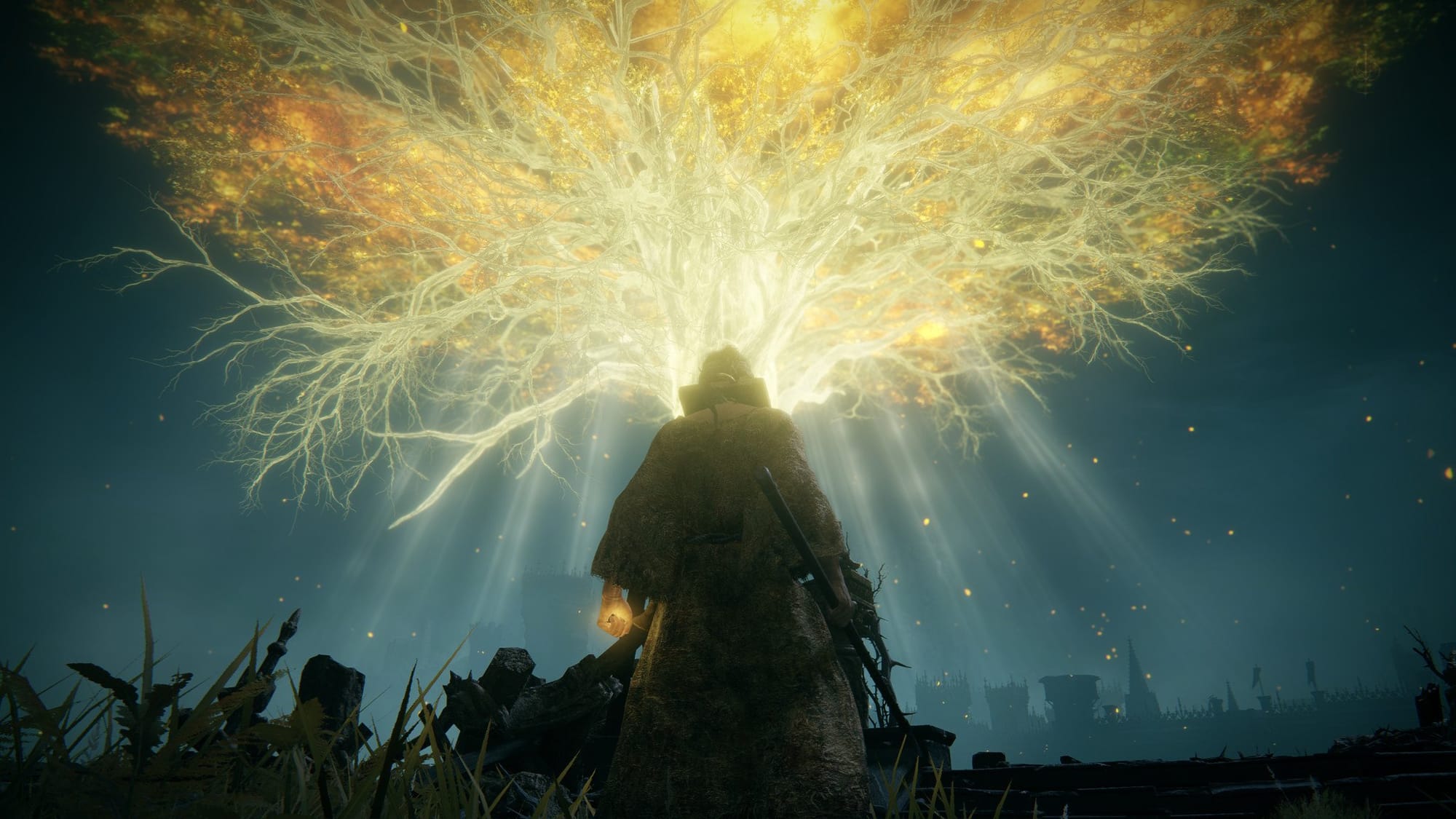
The Lands Between sing on a small screen. For Elden Ring, aim for 800p, a 40 Hz/40 fps cap, Low–Medium mix (Textures High; Shadows/Volumetrics Low), TAA on, motion blur off, and grass set to Low/Medium. That setup keeps traversal smooth without hammering the battery. The Deck’s gyro‑aim (enable it for ranged weapons) is a stealth buff to bows and spells, while rear buttons mapped to whistle and pouch make Torrent handling snappier. When you enter effects‑heavy dungeons, consider toggling Volumetrics lower temporarily. Elden Ring has been a mainstay on Valve’s Top Played pages—open‑world exploration during 20‑minute pockets feels surprisingly natural on Deck. If you’re chasing late‑game bosses, dock and push 60 Hz with a fan profile on high; otherwise, 40 fps delivers excellent consistency on the go. Disable Chromatic Aberration and Vignette for a cleaner image on the smaller screen.
16) Cyberpunk 2077 (2020)
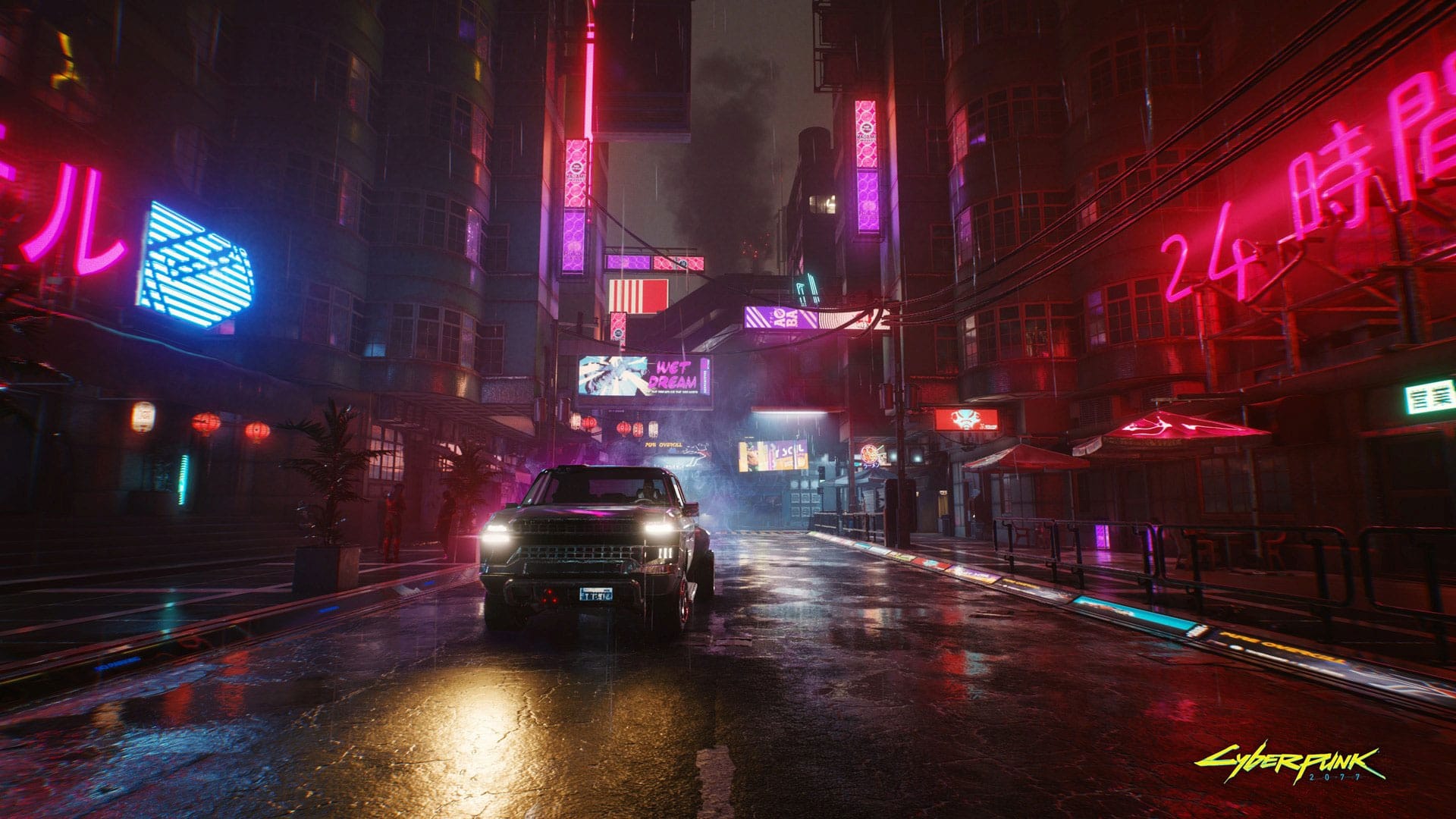
Night City hums at handheld scale with the right knobs. Choose 800p, set the system to 40 Hz/40 fps, pick FSR 2 (Balanced), then mix Medium and Low settings: Textures Medium, Shadows Low, Screen‑Space Reflections Low, Crowd Density Low, RT off. In exchange, you get a surprisingly steady ride through gigs and NCPD hustles. The Deck’s trackpads help with menu navigation, but stick with the excellent controller aim assist for gunplay. Consider turning off film grain and chromatic aberration for clarity. Cyberpunk regularly lands in Valve’s Top Played Deck charts, and it’s easy to see why—mopping up gigs or cruising to gigs is a perfect “one chapter” loop between saves. For battery, cap the TDP around single digits; for docked play, jump to 60 Hz and bump FSR to Quality for cleaner edges. Keep autosaves frequent; the Deck’s suspend/resume is solid, but Night City still appreciates backups.
15) Red Dead Redemption 2 (2019, PC)
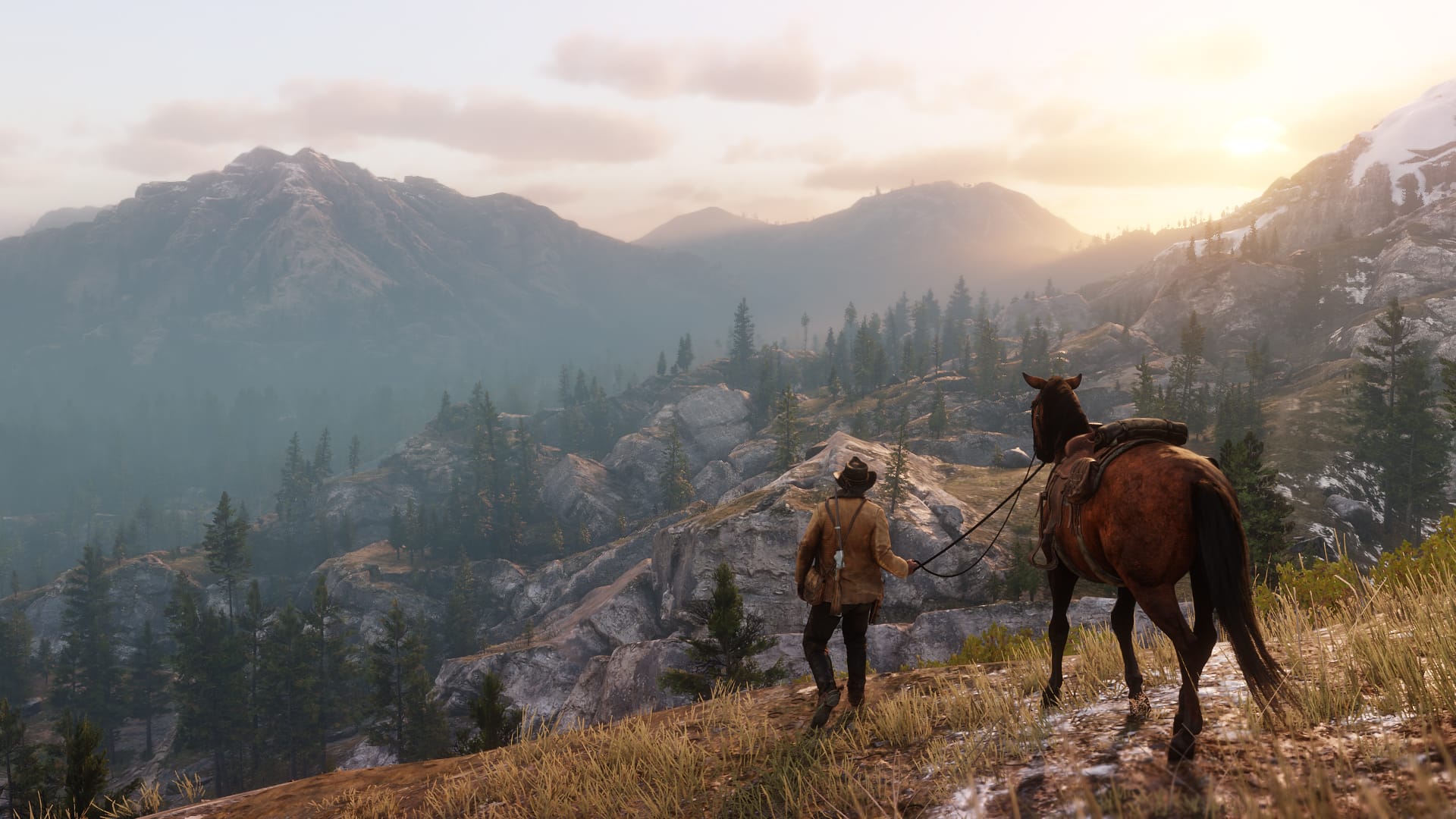
Rockstar’s frontier opus is very playable on Deck with sensible compromises. Use the Vulkan executable, set 800p, FSR 2 (Quality), 40 Hz/40 fps, and start with the Balanced preset before dialing Shadows, Water, and Volumetrics down one step. Keep Textures Medium if you’re storage‑constrained; High looks nicer but isn’t mandatory on the 7‑inch screen. RDR2 shows up frequently in Top Played Deck lists and thrives as a “missions and a campfire” portable—lining up a fishing trip or bounty under a blanket is peak Deck energy. For long rides, turn Camera Shake down and motion blur off. The cinematic camera can mask dips in busy towns if you prefer a locked frame‑time feel. Reduce Tessellation and Grass density in Saint Denis for calmer thermals. Battery tip: a 9–11 W cap is often enough for open‑country travel at 40 fps.
14) Vampire Survivors (2022)
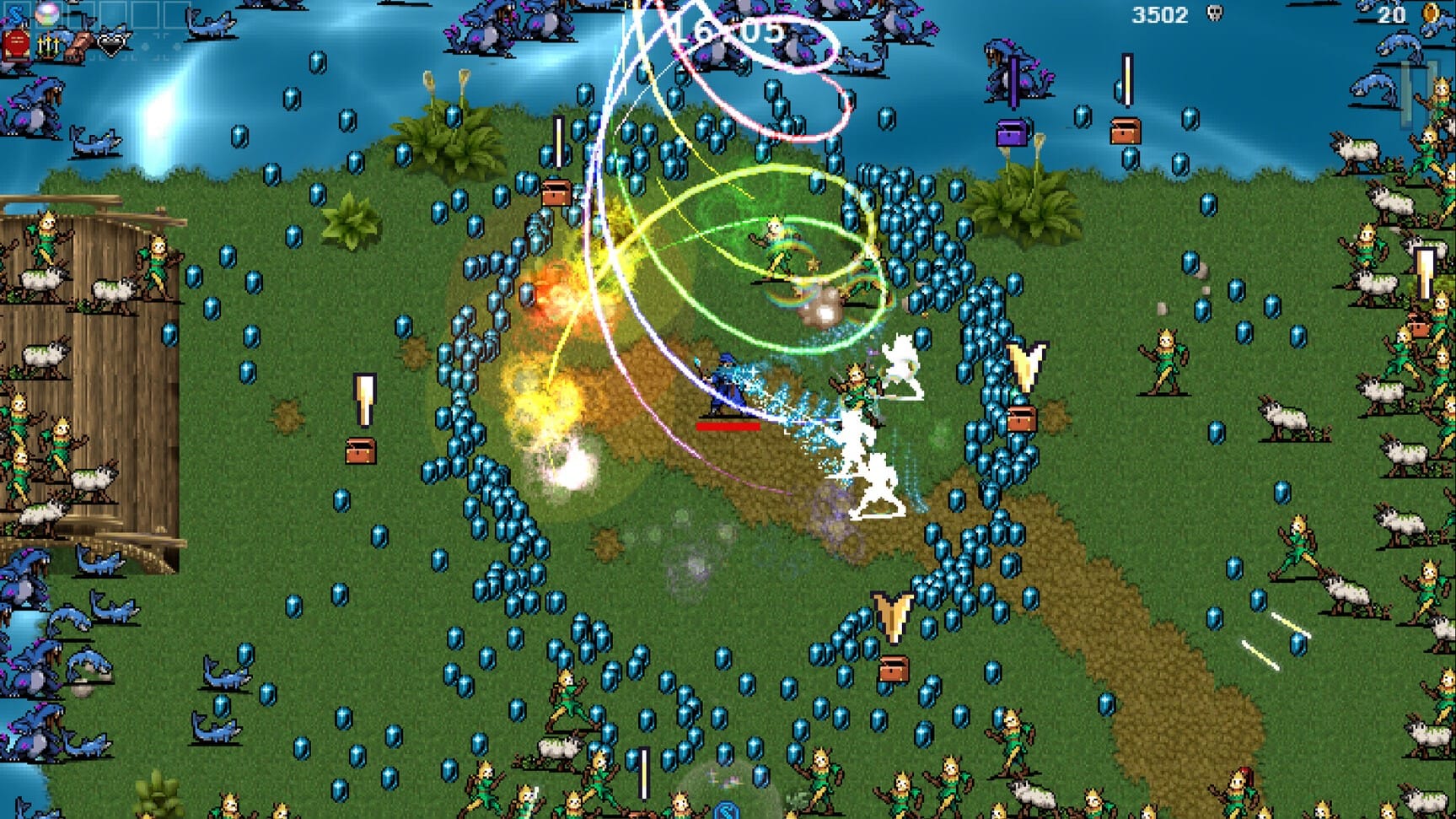
Pure dopamine—and perfect for the Deck. Vampire Survivors is so lightweight you can bump refresh to 90 Hz and still enjoy marathon sessions. The real trick is comfort: map a rear button to reroll/banish, keep V‑Sync on, and consider reduced flashing in the accessibility options for eyes and battery alike. Touch works well in menus, but the twin sticks are ideal during chaotic evolutions. Its bite‑size runs fit the Deck’s quick‑resume flow, which explains why it’s a frequent Top Played presence. If you want to stretch battery to extremes, cap to 60 fps and drop TDP to a very low value; the game barely notices. DLC stages and alternate characters are fantastic “bus‑stop goals”—finish a 15–30 minute run, suspend, repeat. On OLED models, the high‑contrast sprites look delicious; consider lowering brightness slightly to reduce burn on bright maps.
13) Palworld (2024)
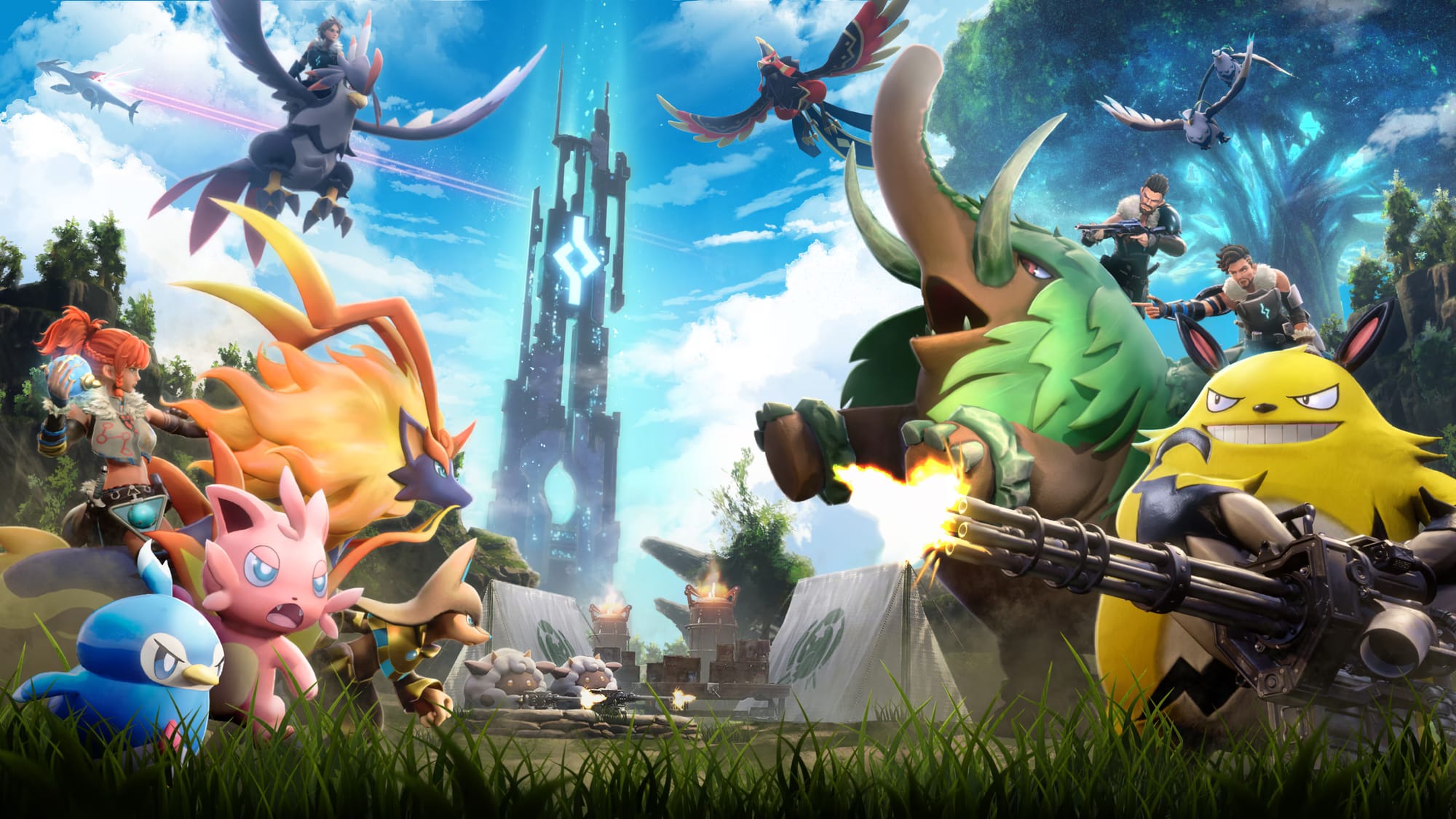
Palworld’s creature‑collecting survival loop translates well to the Deck with a few tweaks. Aim for 800p, FSR 2 (Balanced), 30–40 fps with a 40 Hz system cap, Shadows/Volumetrics Low, and Post‑Processing down a notch or two. Survival sandboxes can be CPU‑spiky, so a moderate TDP gives headroom without nuking battery. Palworld had a massive 2024 on Deck and appears consistently in Valve’s Top Played listings; it’s easy to hop in, craft, raid, and suspend. Map a rear paddle to Mount or Grapple for faster traversal, and nudge FoV slightly up for readability. In co‑op, expect a few heavier moments—dropping crowds and grass density helps. The Deck’s vibration adds a lot to ranged combat feedback, and gyro aim is helpful for quick corrections. Use Performance mode when you’re gathering; switch to your usual settings for boss raids when docked.
12) DAVE THE DIVER (2023)

A surprise life‑sim hit, Dave is tailor‑made for handheld. It’s light enough to lock 60–90 fps while keeping a very low TDP cap for multi‑hour sessions. The Deck’s 16:10 screen does the art style favors; everything pops at 800p without scaling tricks. Consider rumble on low for subtle bite cues while spearfishing, and map a rear paddle for dash to reduce thumb fatigue. The day/night cadence—dive by day, run your sushi bar at night—syncs perfectly with quick suspend/resume. Dave’s popularity has kept it hovering in Valve’s Top Played charts, and it’s no mystery why: the game is relaxing, progression is steady, and the vibe is immaculate on headphones. For battery preservation, cap to 60 fps on LCD models; on OLED, 90 Hz makes scrolling and menus extra buttery. It’s an ideal Deck “comfort meal” between heavier epics like Elden Ring and Cyberpunk.
11) Lethal Company (2023)
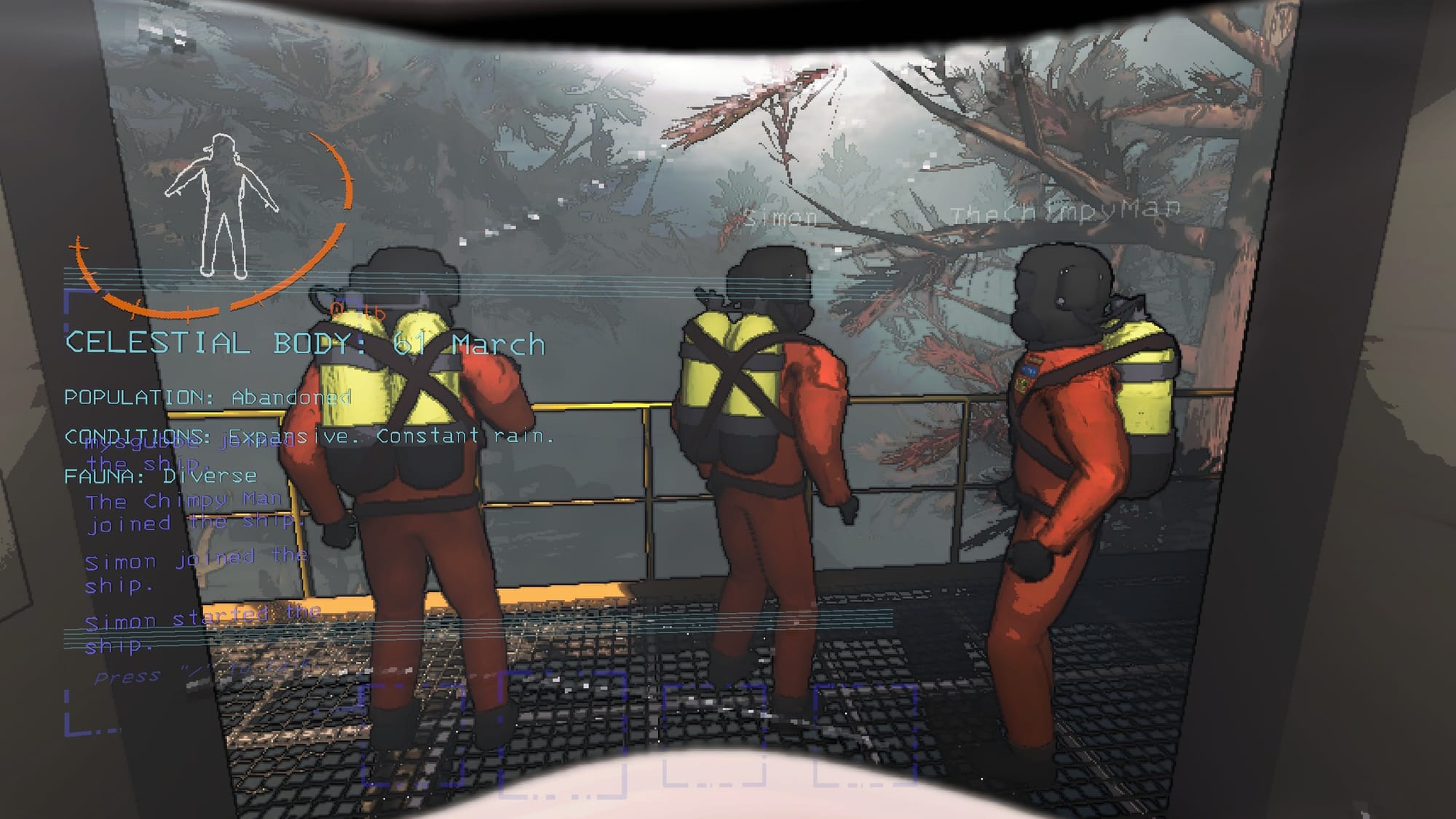
Co‑op horror that’s equal parts screaming and spreadsheets. On Deck, Lethal Company benefits from 800p, V‑Sync on, Shadows Low, View Distance Medium, and a 60 fps cap (or 40 fps for longer battery). Voice chat is key—use a headset—and map a rear paddle to walkie push‑to‑talk. The Deck’s trackpads help with inventory drag‑and‑drop if you prefer mouse‑like precision. Performance can dip during weather effects or with lots of props; shaving post‑processing and foliage keeps frame‑time tidy. It’s been a highly visible Top Played multiplayer pick on Deck, largely because session lengths are perfect for portable play: scavenge, get spooked, sprint to the ship, sell, and suspend. Consider lowering gamma slightly to make danger “read” better on the small screen, and keep motion blur off for the most legible flashlight sweeps in tight corridors.
10) Grand Theft Auto V (2015, PC)
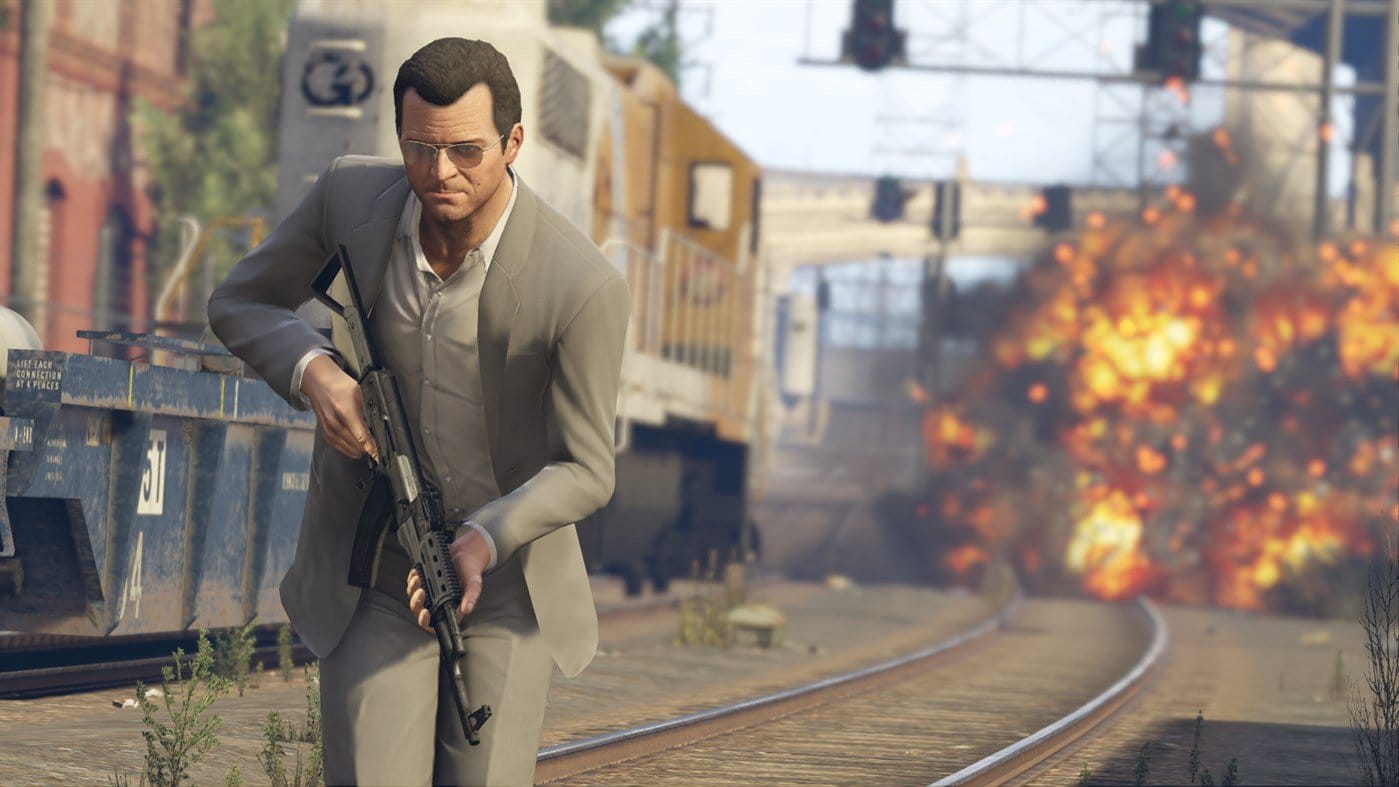
Yes, GTA V still cooks on Deck. For a comfortable balance, set 800p, DX11, V‑Sync, FXAA on, MSAA off, and mix Textures High with Shadows/Post‑FX Low; then run the system at 40 Hz/40 fps. In the city, consider Population Density and Variety one step down to keep frame‑time steady. The Deck’s gyro helps with sniping; map a rear button to Character/Weapon Wheel for faster selection. GTA V continues to chart in Top Played on Deck because it’s modular: story missions, collectibles, stunt flights—you can do a lot in 20 minutes. Keep Chromatic Aberration and Film Grain disabled for a cleaner look at handheld distance. If you prefer 60 Hz when docked, push FSR via driver‑level scaling (or just stay at 800p) and expect to tweak shadows. For battery, a 10–12 W cap handles Los Santos well at 40 fps.
9) No Man’s Sky (2016)
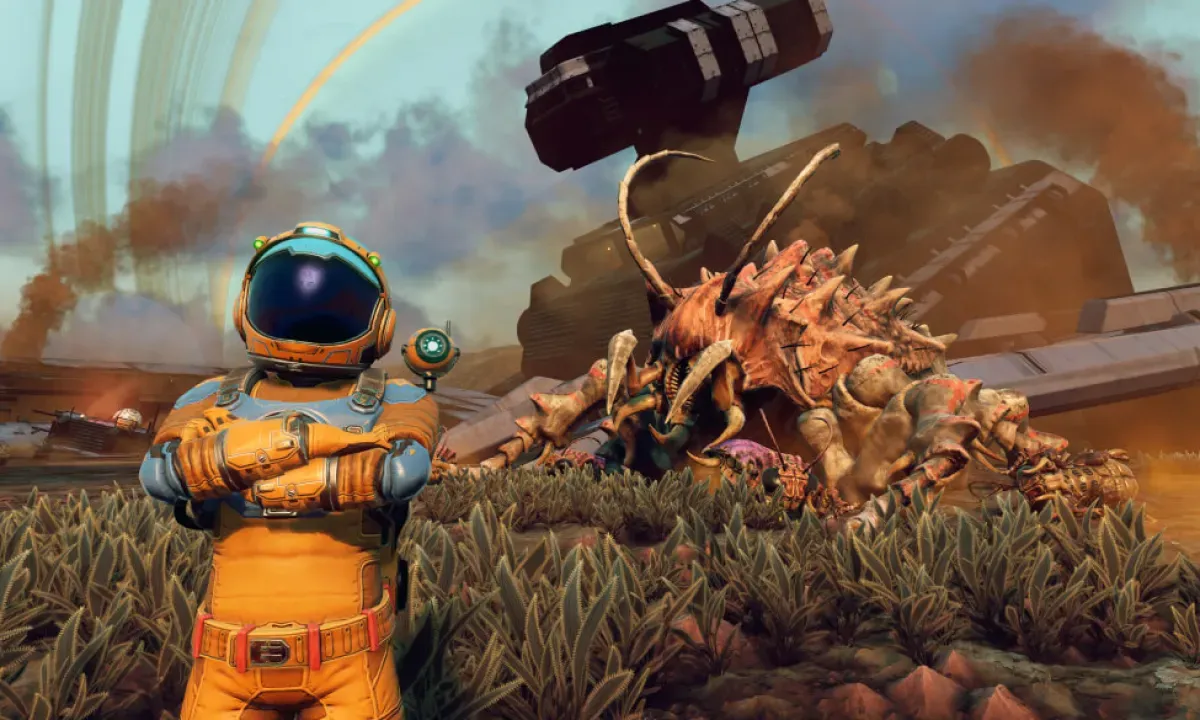
Procedural exploration is a match made in Deck heaven. Use 800p with FSR 2 (Quality), 40 Hz/40 fps, and reduce Shadows, Ambient Occlusion, and Volumetrics to Medium/Low. NMS’s HUD scales nicely at 7 inches; bump HUD scale a notch for readability. The gyro is surprisingly helpful for mining precision and ship aiming; enable it with a small dead‑zone. Expect smooth sailing in most biomes; storms can be heavier, so knock effects down temporarily. No Man’s Sky has been a Top Played evergreen because it pairs perfectly with the Deck’s suspend/resume—finish a milestone, sleep the console, return to your ship later. On OLED, the deep blacks do space travel justice; reduce brightness to control power draw during long warp chains. If you base‑build heavily, consider a 60 Hz docked profile with Textures High; otherwise 40 fps is the sweet spot on the go.
8) Hades II (2025)
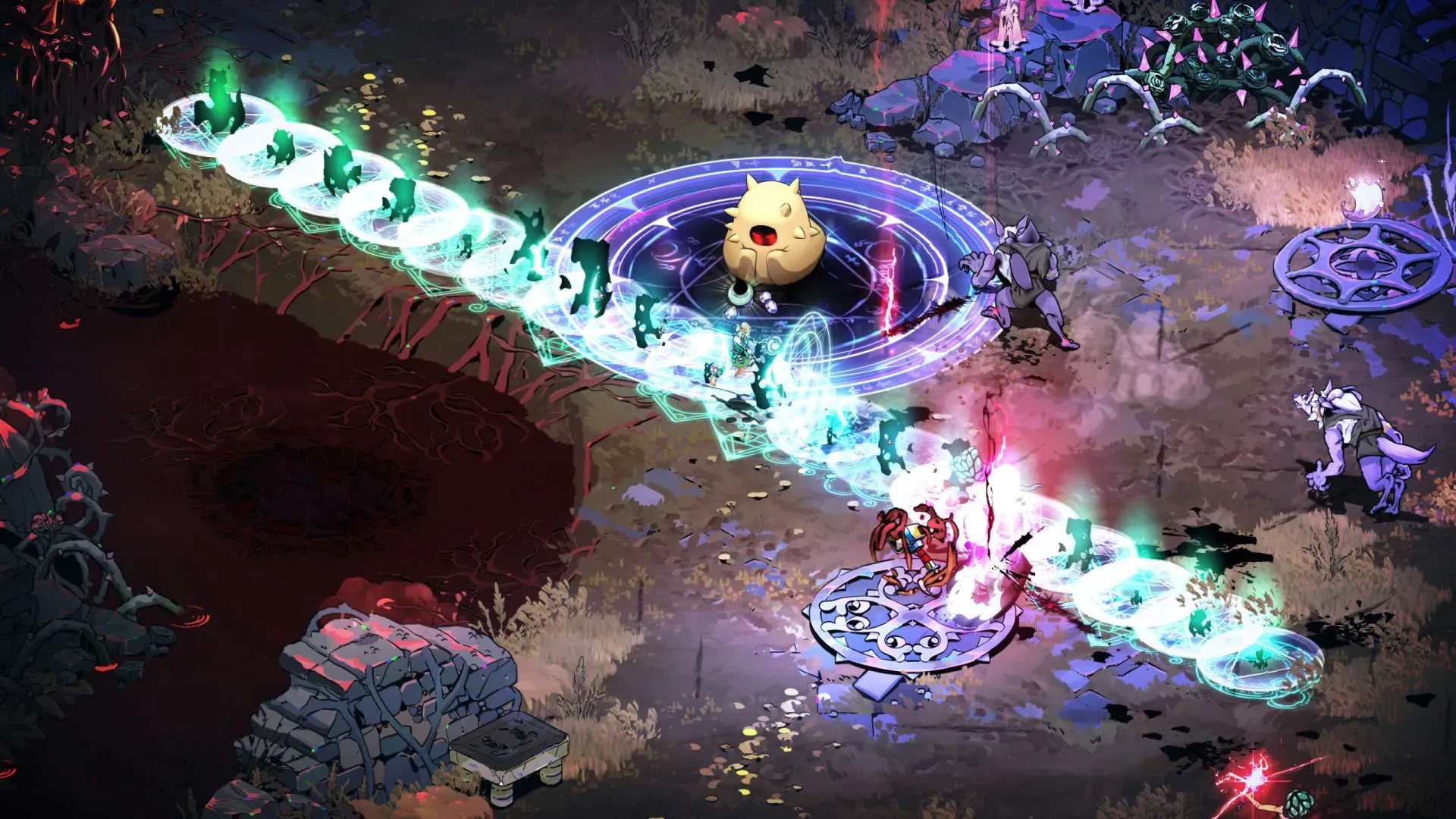
With its 1.0 launch in 2025, Hades II surged to the top of charts and fits the Deck like a glove. It’s light enough to run at 90 Hz on OLED without major battery anxiety, yet tactical enough that 60 Hz feels perfect on LCD models. Use V‑Sync and consider a 5–7 W TDP cap; the game remains buttery while your battery lasts ages. Supergiant’s crisp art, clean fonts, and readable combat telegraphs are ideal for a 7‑inch screen. Map a rear paddle to Cast or Sprint to reduce thumb strain in longer runs. Suspend/resume between chambers is instant, making it an “always carry” roguelike. If you’re bouncing between Deck and desktop, cross‑saves keep progress painless. After its 1.0 release, it drew overwhelmingly positive Steam reception and giant player peaks—momentum that carried squarely into 2025.
7) Monster Hunter Rise (2022, PC)
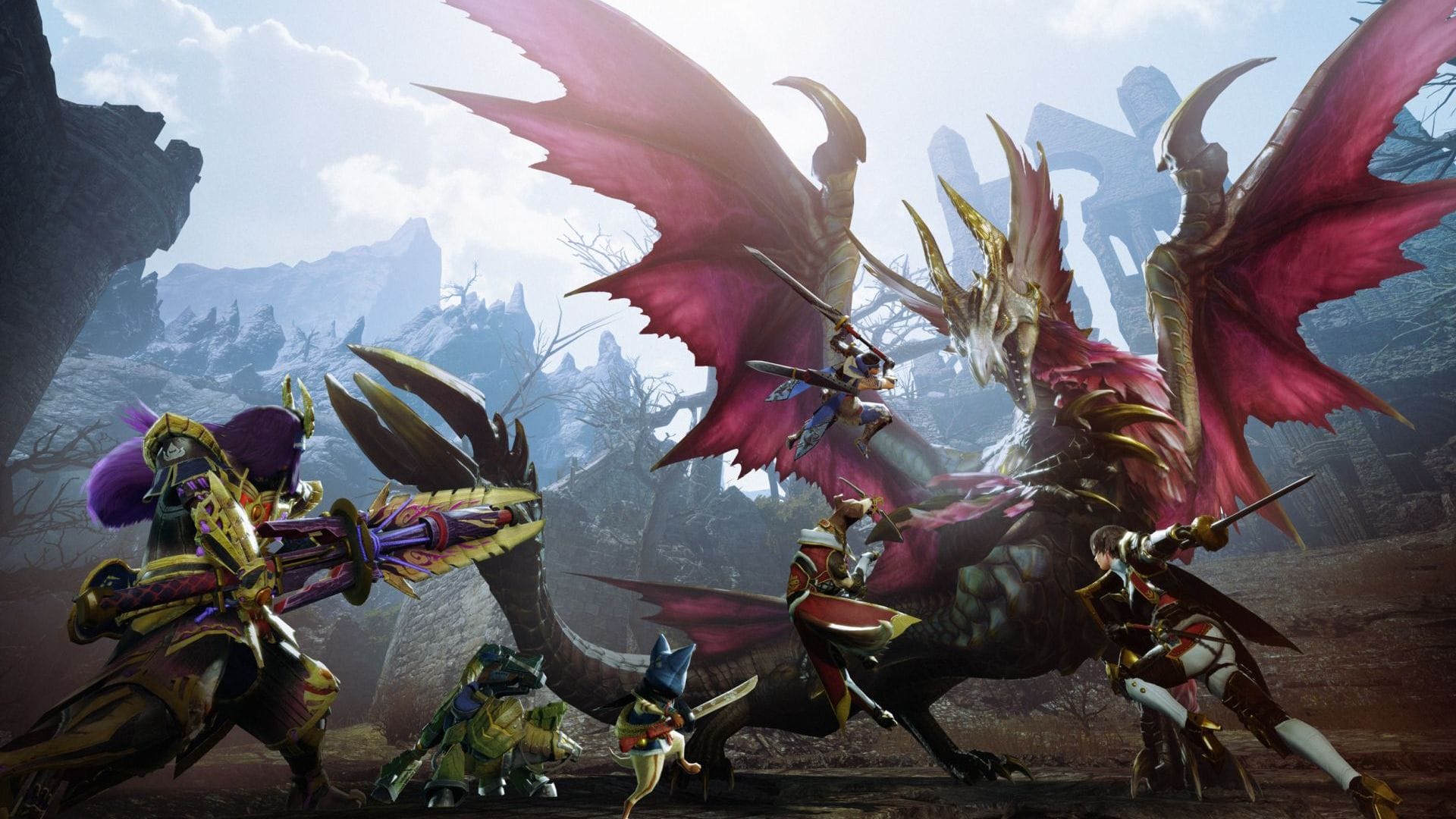
Rise is the Monster Hunter you want on a train. Opt for 800p, 60 Hz, V‑Sync on, Textures High, Shadows Low, Ambient Occlusion Off, and lock Anti‑Aliasing to TAA for clean edges. The Gyro‑aim option for bowguns feels great on Deck; map a rear paddle for Wirebug inputs to preserve thumbs during hunts. In the most effects‑heavy arenas, step Volumetrics down a notch to keep frame‑time stable. Rise scales beautifully and loads quickly off the Deck’s SSD; it’s the most “pick up and go” entry for portable hunts. If you’re chasing Apex monsters or event quests, consider a 40 Hz/40 fps profile at Medium mix to stretch battery. For online hunts, a headset + push‑to‑talk on a rear button works wonders. Tactile rumble helps with perfect guard timing; dial it back if you’re sensitive during longer grinds.
6) Persona 5 Royal (2022, PC)
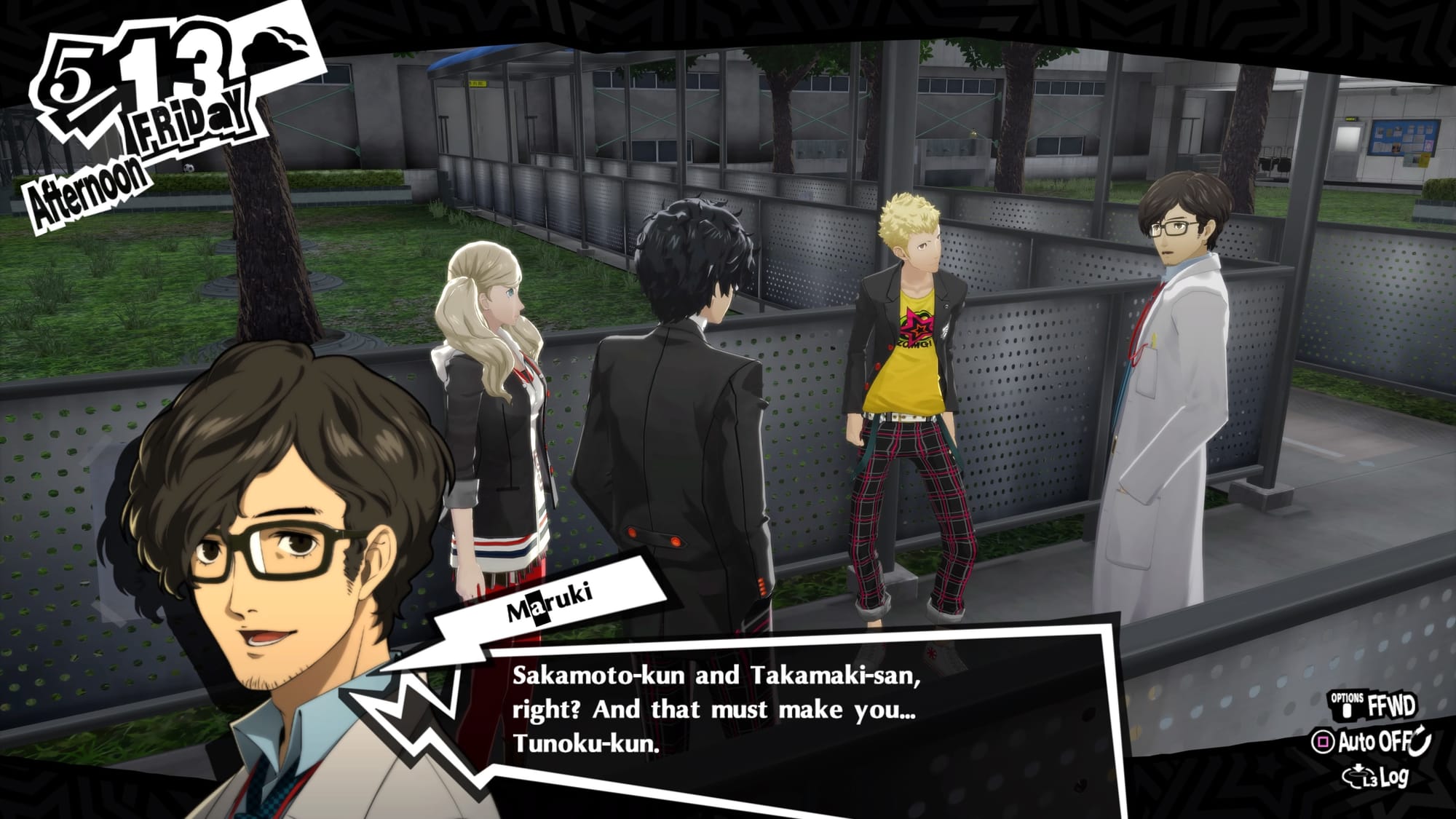
Turn‑based bliss and buttery performance make P5R an easy Deck win. Set 1280×800, 60 Hz (the game targets 60 fps cleanly), and enjoy High settings with minimal battery drain. Because cutscenes use a 16:9 frame, you’ll see small letterboxes; it’s normal and not a performance issue. Fonts are crisp at handheld distance, and combat animations look terrific on OLED. Map a rear paddle to Third Eye for faster dungeon reads, and another to Auto‑Advance during story sessions to rest your thumbs. If you’re on a marathon palace crawl, cap TDP low—P5R remains smooth. The Deck’s suspend/resume pairs perfectly with confidant management: knock out a classroom question, suspend, return at lunch. For docked play, keep 60 Hz and enjoy near‑zero hitches. It’s a “set it and forget it” entry that shows just how friendly JRPGs are to Valve’s handheld.
5) Sea of Stars (2023)

A modern classic JRPG throwback with exquisite sprite work, Sea of Stars is a perfect case for 90 Hz on OLED or 60 Hz on LCD with a very low TDP cap. The turn‑based timing inputs are snappy, and the image is razor‑clean at 800p. Accessibility notes: enable damage numbers and timing aids if you want chill play on the couch. As with many 2D games on Deck, you can run at capped 60 fps for enormous battery life without sacrificing feel. The soundtrack shines on headphones—consider Night Mode in system audio so explosions don’t wake the house. For long sessions, map a rear paddle to Run to ease left‑thumb fatigue. If you dock, set your TV to Game Mode to keep input latency down during timing windows. Sea of Stars is a great “palate cleanser” between heavier open‑world commitments in this list.
4) Hollow Knight (2017)
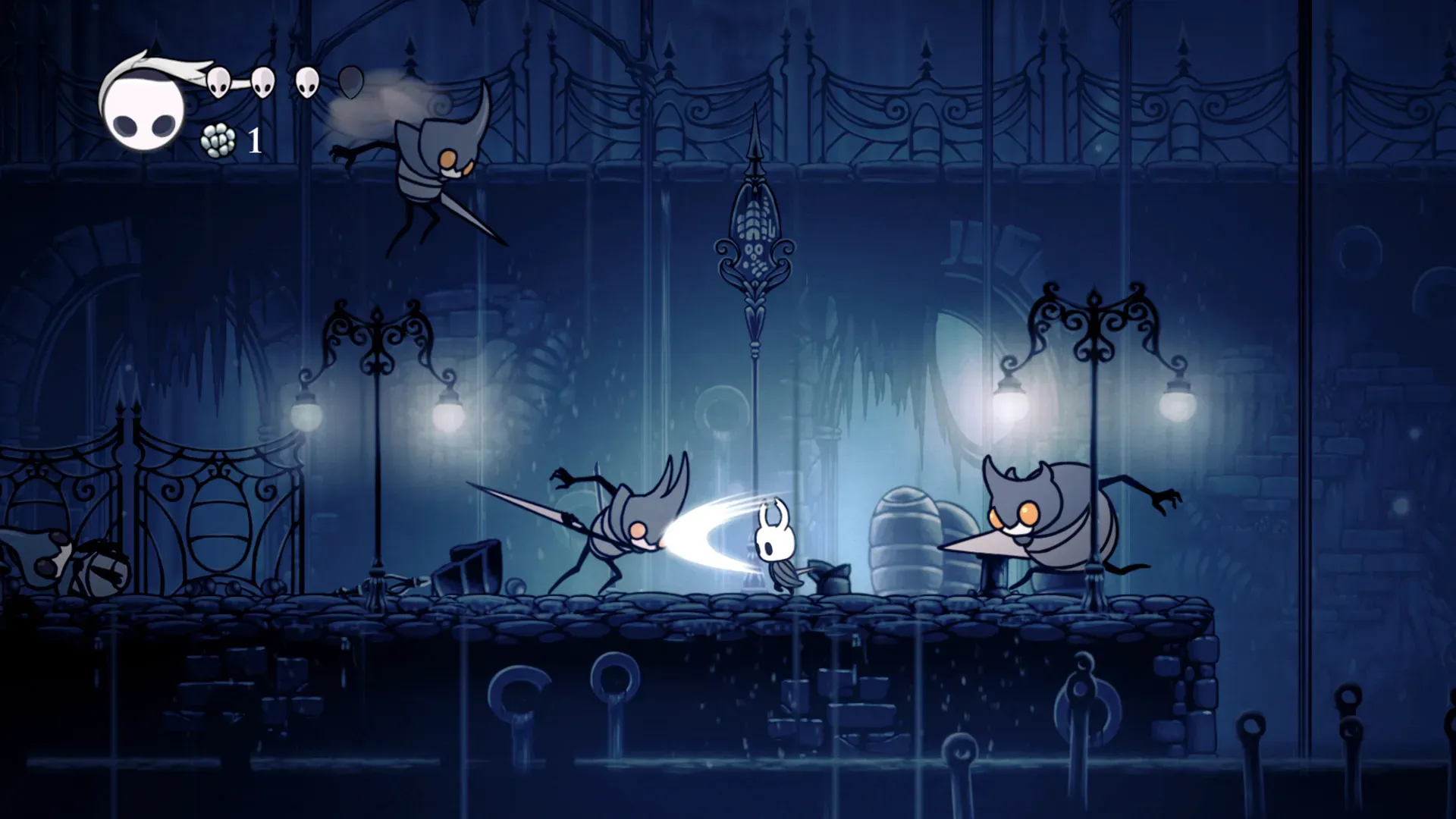
Seven years on, Hollow Knight is still a masterclass—and it’s pristine on Deck. The hand‑drawn art scales effortlessly to 800p, and the game is happy at 90 Hz on OLED or 60 Hz on LCD. For the sharpest look, keep V‑Sync on and disable post‑processing blur. The gyro can gently help with precision platforming if you like, and a rear paddle mapped to Quick Cast makes late‑game charms more comfortable. Hollow Knight is also tiny on storage, a nice perk if you’re juggling bigger titles. If you chase Pantheon challenges, consider a 40 Hz/40 fps profile to reduce thermal variance during boss rushes (input latency stays consistent). It’s a superb “always installed” game—perfect for knocking out a route in 20 minutes or getting lost for hours underground. Suspend/resume is instantaneous between benches and transitions.
3) Slay the Spire (2019)
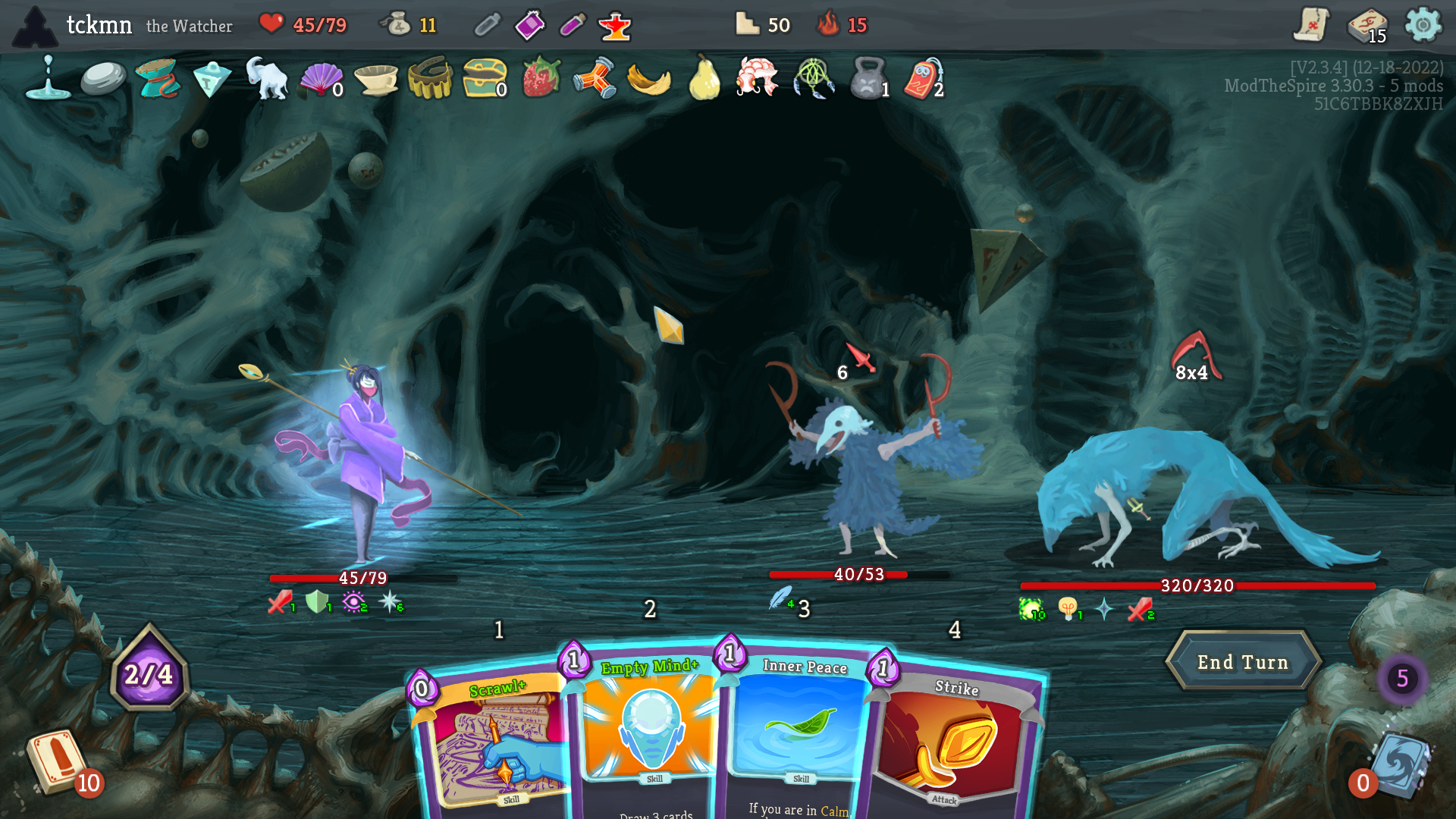
This genre‑defining deckbuilder is one of the best battery‑to‑fun ratios on Deck. It hums at 90 Hz on OLED, but the main win is that you can cap it to 60 fps and run an extremely low TDP while still getting crisp UI and instant inputs. Map a rear paddle to End Turn and another to Draw Pile to speed through encounters. The compact 7‑inch screen makes reading card text easy; crank text size up a notch if you play in bed. Because runs pause cleanly between floors, the quick‑suspend lifestyle fits perfectly—dash through an elite fight on lunch break, then resume later. Daily Climbs are a smart “dock it” activity if you want postcards on your TV without changing settings. It’s also a great travel companion because it’s resilient to short suspends and intermittent Wi‑Fi.
2) Dead Cells (2018)
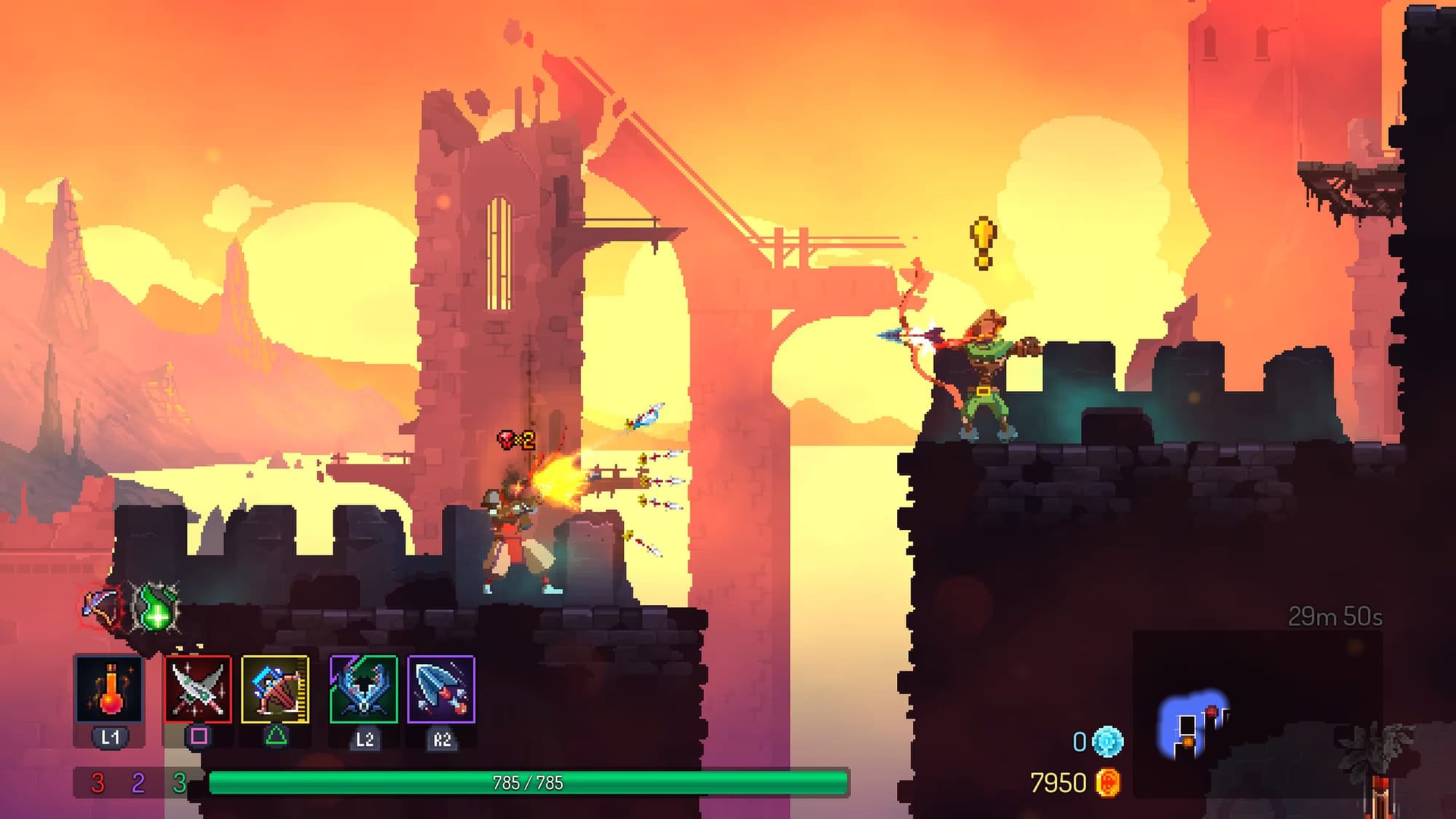
Fast, precise, and gorgeous on OLED, Dead Cells is a poster child for Deck‑first 2D action. Run 90 Hz (or 60 Hz for battery), keep V‑Sync on, and enable damage numbers for legibility. The Deck’s gyro can be mapped to micro‑adjust ranged attacks if you like; otherwise, the default controller mapping is perfect. The game’s short biomes and persistent unlocks make it a quintessential “one run before sleep” pick, and it loads almost instantly from SSD. If you’re running high‑effect biomes or DLC, disable motion blur and bloom for clarity. A 5–7 W TDP cap is usually plenty. Docked, it upscales nicely; handheld, 800p is pin‑sharp. Dead Cells is also nice to leave “resident” on your Deck because it coexists peacefully with large installs from the rest of this list.
1) The Witcher 3: Wild Hunt (2015)
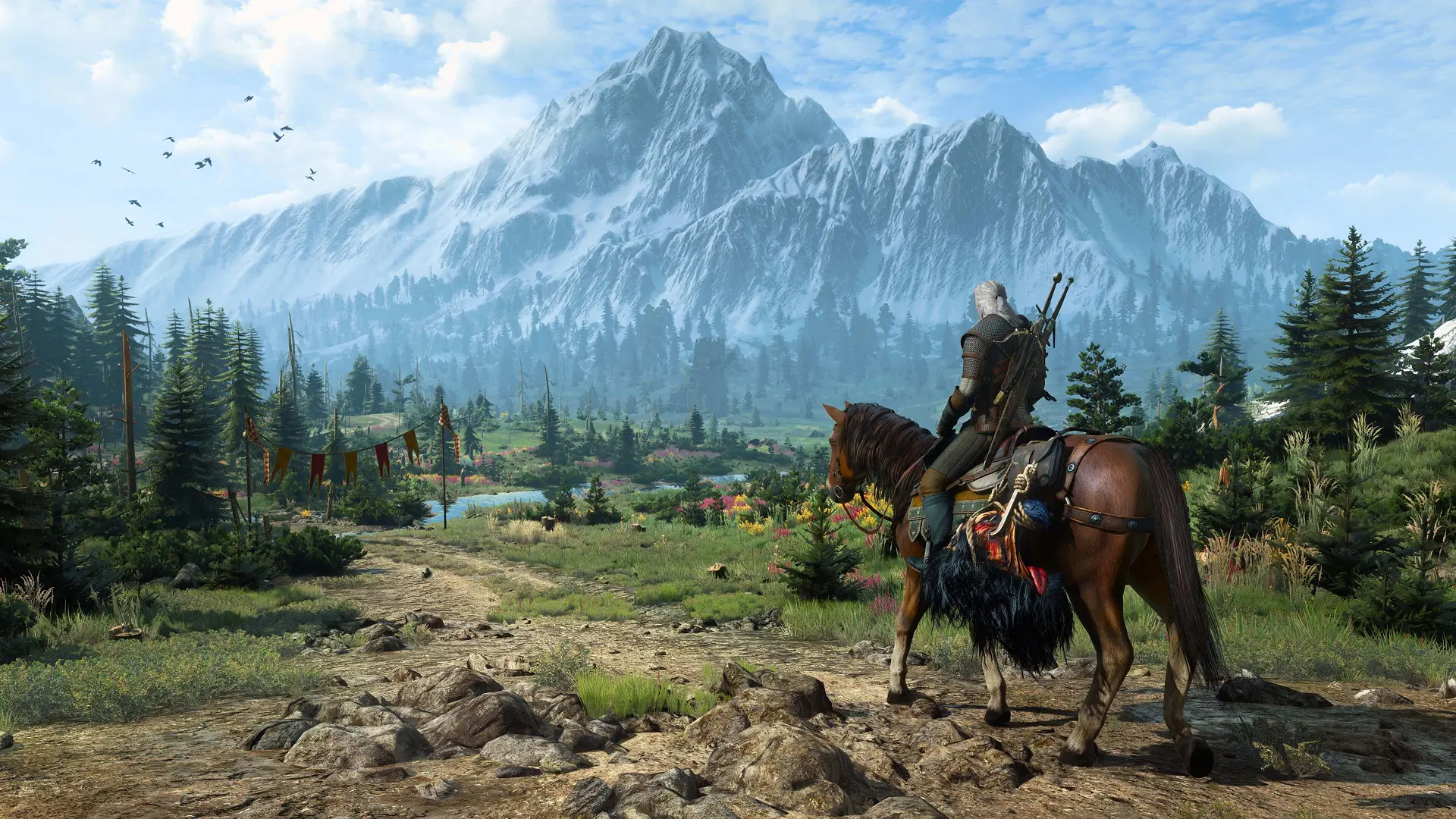
The 2022 “next‑gen” patch added options, but on Deck the recipe for Witcher 3 remains: 800p, FSR 2 (Quality), RT off, 40 Hz/40 fps, with Textures/Anisotropy High and Shadows/Grass/SSAO modest. If you notice stutter in DX12, try switching to DX11 mode in the launcher; many players report steadier frame‑times there on low‑power hardware. Disable Chromatic Aberration and Vignette for a cleaner handheld image, and reduce HairWorks (or off) to avoid spikes in busy Novigrad scenes. The Deck’s rear paddles mapped to Quicksign and Potion slots transform combat quality‑of‑life. Witcher 3’s chaptered quests make it easy to suspend after a contract turn‑in; the Deck’s resume picks up exactly where you left off. For docked sessions, 60 Hz is feasible with a few more concessions—or keep the 40 fps lock for consistency.
A note on “Top Played” vs. curated picks
Our list blends titles that appear frequently in Valve’s live “Top Played on Steam Deck” charts with hand‑picked games that simply feel exceptional on the Deck form factor. Valve also recapped 2024’s Deck trends—think Balatro, Palworld, and other breakouts—before 2025’s new hits (like Hades II) took off. Use this guide as a starting point, then check the live chart to see what the Deck community is stuck on this week. And when in doubt about compatibility, remember Valve’s Deck Verified program spells out expectations right on a game’s store page.
Quick global tuning tips (works for most of the list)
- 40 Hz/40 fps is the Deck’s magic battery‑to‑smoothness sweet spot for 3D games; go 60–90 Hz for 2D/lightweight titles.
- Prefer FSR 2 Quality at 800p over pushing higher settings; on the small screen, the trade‑off is excellent.
- Turn off motion blur, film grain, chromatic aberration, and vignette for clarity at handheld distance.
- Map rear paddles to your most repeated actions; it reduces thumb strain during long sessions.
- When possible, Vulkan over DX12/DX11 on Deck; exceptions exist (try both in Witcher 3).





